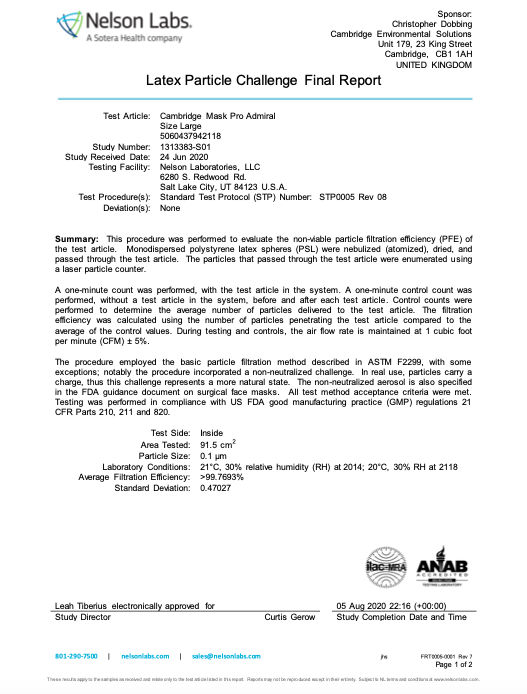Understanding Particle Filtration Efficiency (PFE)
What is the Latex Particle Challenge and Particle Filtration Efficiency (PFE)?
The Latex Particle Challenge tests the Particle Filtration Efficiency (PFE) of a mask, which measures its ability to filter out dust, pollutants, and other non-viable particles from the air. Our PRO mask boasts an impressive average PFE of 99.76%.
How Does PFE Testing Work?
PFE testing involves passing small latex particles through the mask and using a laser particle counter to measure the number of particles that penetrate the mask. The PFE is calculated by dividing the number of particles that pass through the mask by the total number of test particles.
What are Non-Viable Particles?
Non-viable particles are not living microorganisms, but they can carry bacteria and viruses. These particles include a wide range of environmental toxins and pollutants, such as PM2.5 and PM10, as well as household dust and pet dander. They are generally larger than viruses or bacteria but can vary significantly in size.
A higher PFE means the mask is more effective at filtering out these particles, providing better protection against various airborne contaminants.
If you have further question, please contact us by email at info@cambridgemask.com or Chat button on our sites to connect with our Customer Service Team.

